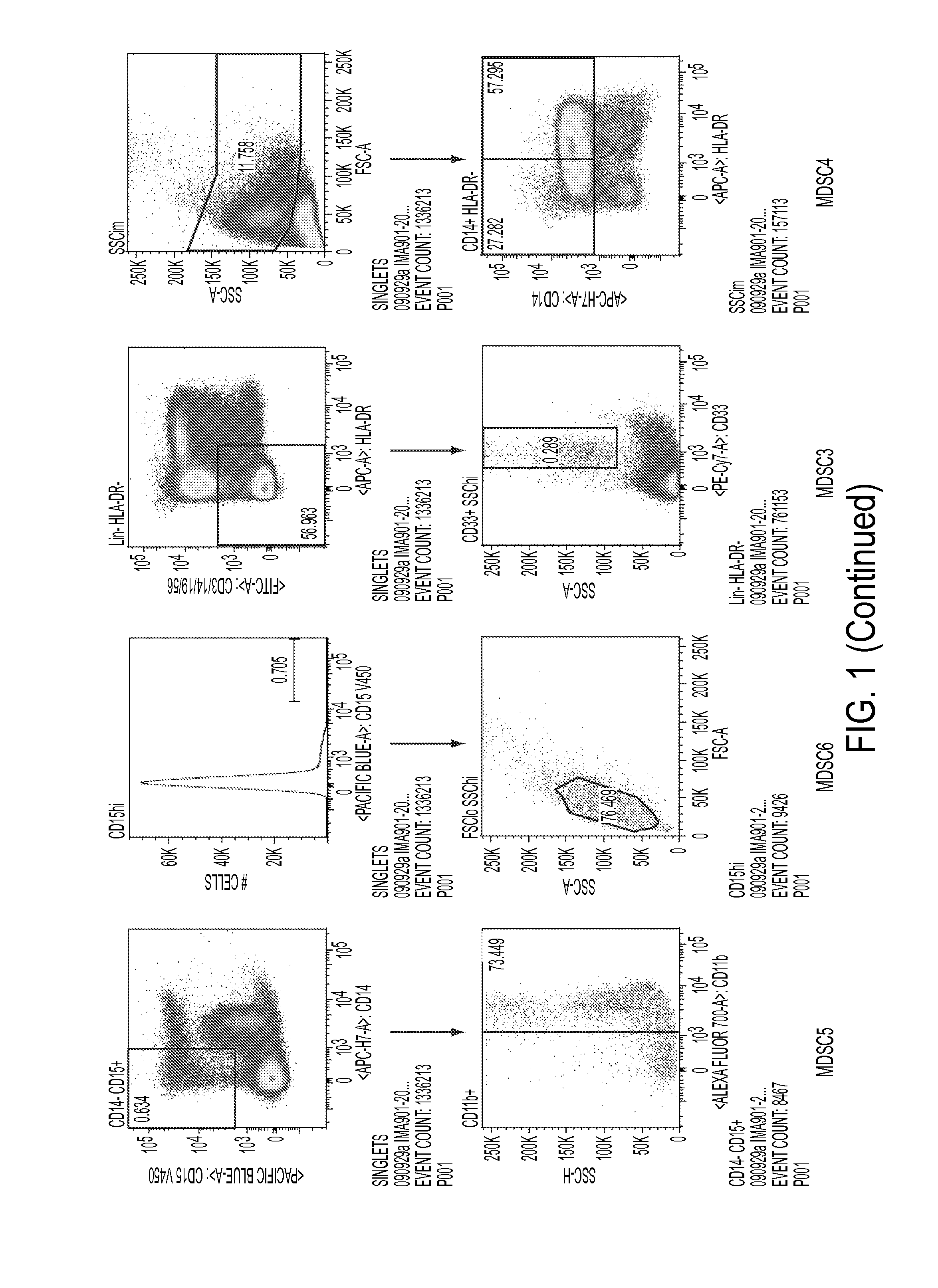Use of myeloid cell biomarkers for the diagnosis of cancer
a technology of myeloid cells and biomarkers, applied in the field of myeloid cell biomarks, can solve the problem that rcc is fatal in nearly 80% of patients, and achieve the effect of increasing the level of said mdsc phenotypes and diagnosing and/or prognosing cancer
- Summary
- Abstract
- Description
- Claims
- Application Information
AI Technical Summary
Benefits of technology
Problems solved by technology
Method used
Image
Examples
examples
[0081]A flow cytometry panel was established that could identify all six MDSC populations by a single multicolor staining. This assay was performed for all available pre-treatment patient samples of the tested IMA901-202 ITT population (N=67 available, N=61 evaluable), matched healthy donor samples (N=22 available, N=22 evaluable).
Comparison of Study Patients with Age-Matched Healthy Donors
[0082]For comparison of pre-treatment levels with healthy donors, only intention-to-treat (ITT) patients below the age of 70 were selected to match the oldest healthy control donors. The resulting groups of patients (N=52) and healthy donors (N=22) were balanced with respect to age, gender and CMV seropositivity. It was found that—while levels of MDSC1 were different between patients and healthy donors—levels of MDSC2, 3, 4, 5 and 6 were highly significantly increased in patients as compared to healthy donors.
Correlations Between Baseline Parameters and MDSC Levels
[0083]Within the MDSC evaluable I...
PUM
| Property | Measurement | Unit |
|---|---|---|
| depth of | aaaaa | aaaaa |
| Liquid Counting Beads | aaaaa | aaaaa |
| width | aaaaa | aaaaa |
Abstract
Description
Claims
Application Information
 Login to View More
Login to View More - R&D
- Intellectual Property
- Life Sciences
- Materials
- Tech Scout
- Unparalleled Data Quality
- Higher Quality Content
- 60% Fewer Hallucinations
Browse by: Latest US Patents, China's latest patents, Technical Efficacy Thesaurus, Application Domain, Technology Topic, Popular Technical Reports.
© 2025 PatSnap. All rights reserved.Legal|Privacy policy|Modern Slavery Act Transparency Statement|Sitemap|About US| Contact US: help@patsnap.com



